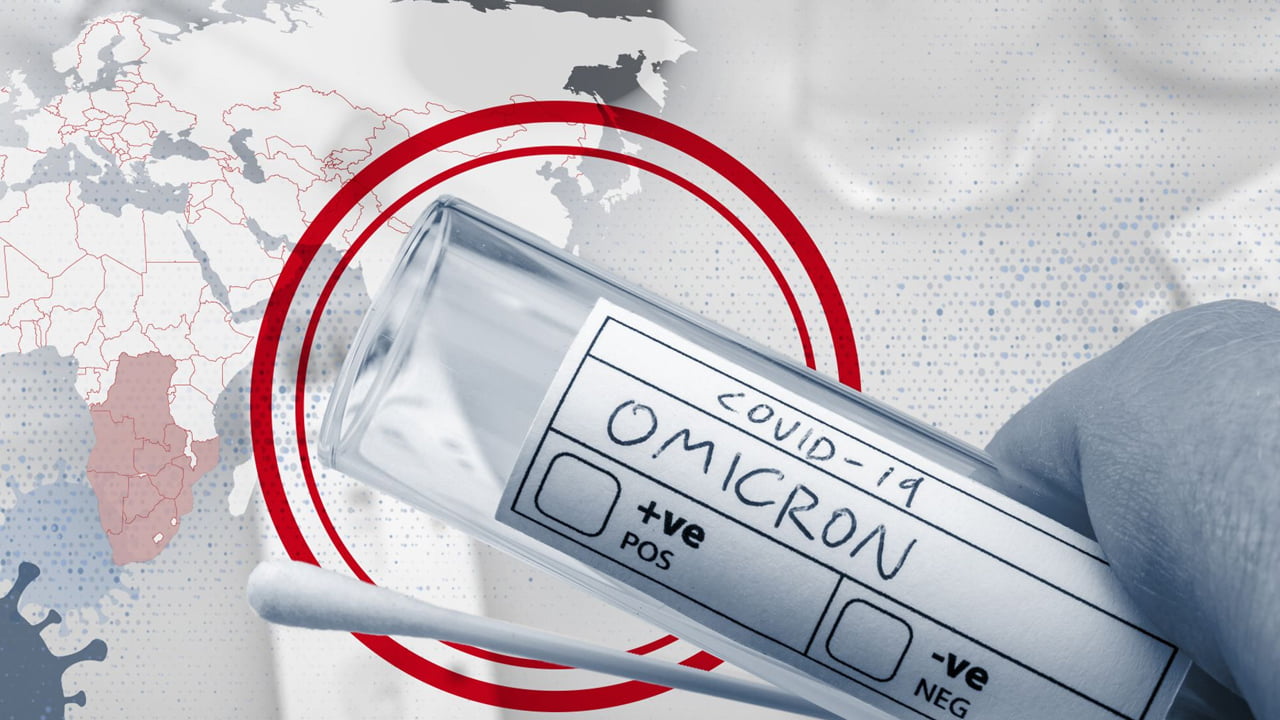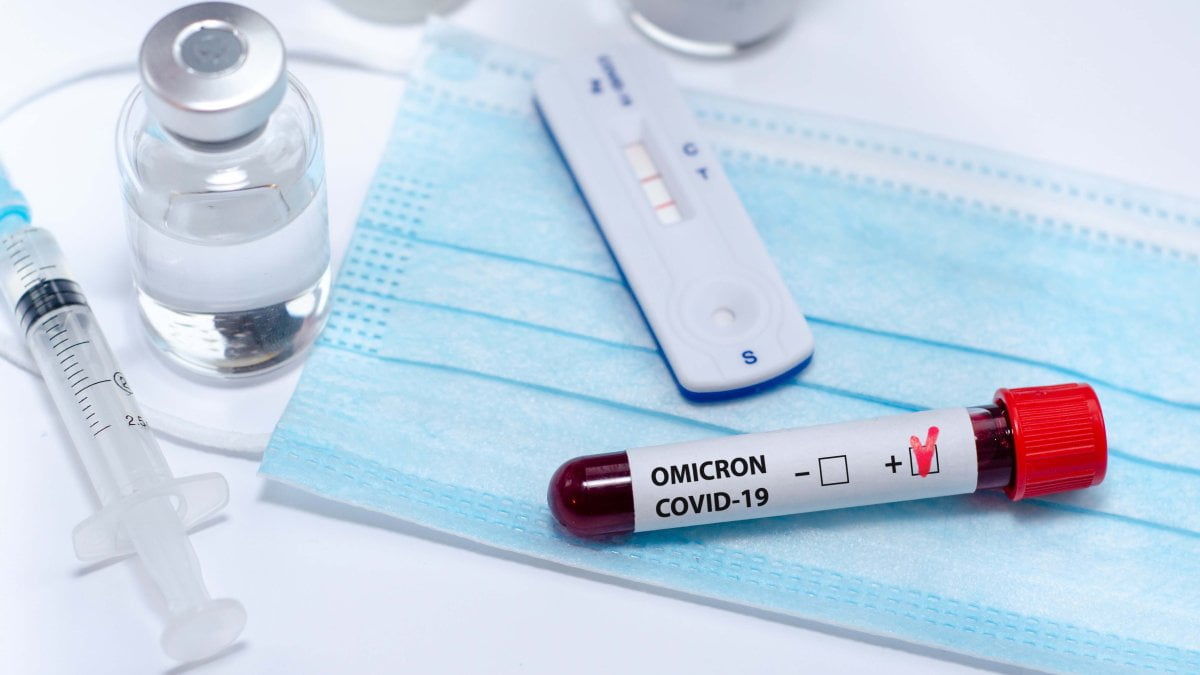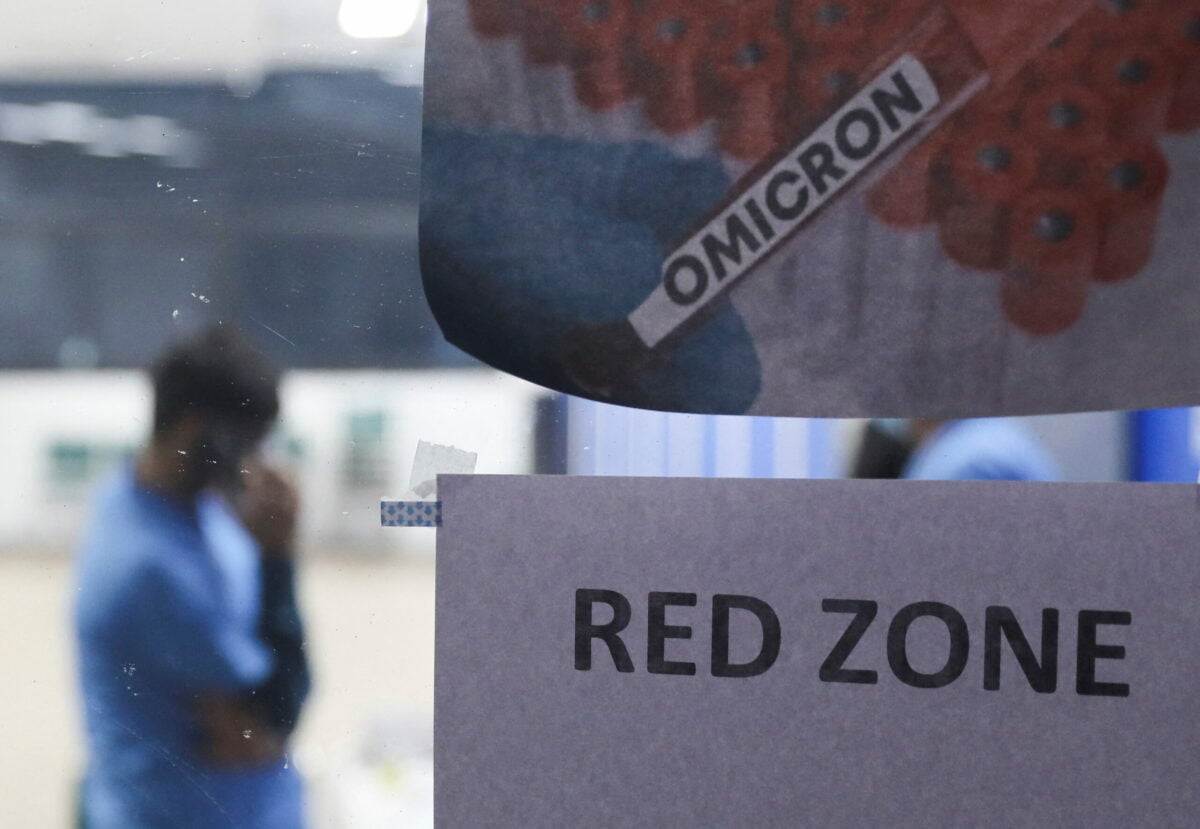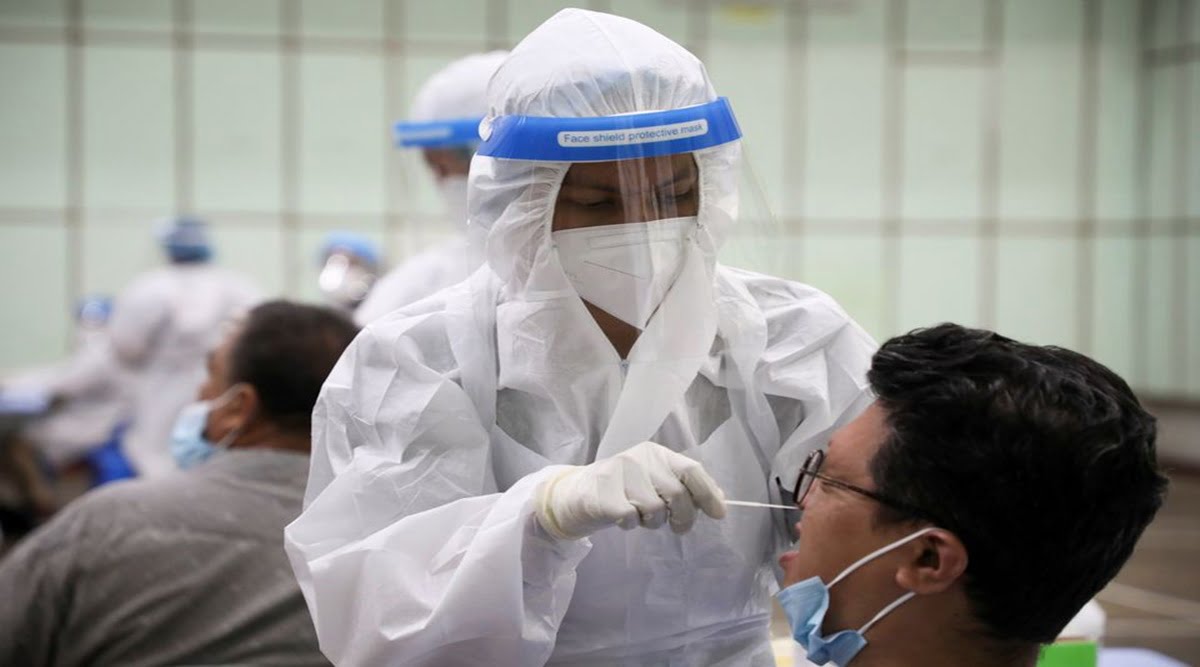Will India’s government impose another lockdown in response to the new covid strain?

Will India’s government impose another lockdown in response to the new covid strain?
Covid-19 current situation:
After dropping below 10,000 for several days, India’s daily coronavirus disease (Covid-19) cases are on the rise once more, with the Omicron variety accounting for a large proportion of new infections. The recent increase in infections has forced state governments to re-impose restrictions to stop the virus from spreading further. In addition, while Omicron continues to wreak havoc around the world, a new, highly mutated coronavirus strain has been discovered in France. French scientists connected the variety known as IHU.
A factsheet on the present Covid-19 situation in India can be found here:
January 18:
- Total number of confirmed cases: 301,121 (37,167 active)
- New cases: 2,032
- Total deaths: 2,492 (two new deaths)
- Hospitalized cases: 854
- Intensive care: 112
- Total vaccinations: 4,448,921 received first dose
(89.3% of eligible pop. 5+); 4,157,150 second doses (83.4%); 1,591,505 third doses (34.3%)
- Recovered from acute infection: 258,417
- Long-term care and assisted-living homes, and acute care facilities currently affected: 50
Omicron: What We Know About It
Spread
SARS-CoV-2 is a virus that causes SARS. Omicron is likely to spread more quickly than the SARS-CoV-2 virus, albeit how quickly Omicron spreads relative to Delta. The CDC (Centers for Disease Control and Prevention) believes that anyone who has been infected with Omicron can pass it on to others, even if they haven’t been vaccinated or shown any symptoms.
Severe Illness
More research is needed to determine whether Omicron infections, particularly reinfections and breakthrough infections in people who have been fully vaccinated, cause more severe illness or death than infections caused by other variations.
Vaccines
Vaccines are likely to protect against severe sickness, hospitalisations, and deaths caused by the Omicron variant infection. Patients who have been fully immunised are more likely to develop new infections. Vaccines against other variants, such as Delta, have prevented severe disease, hospitalisations, and mortality. Omicron’s new look emphasises the importance of immunisation and boosters even more.
Treatments
Scientists are attempting to determine how effective existing COVID-19 treatments are. Despite Omicron’s shifting genetic makeup, some treatments are likely to be effective, while others may be less so. With the Omicron variety spreading worldwide, including India, scientists are working at breakneck speed to decipher the mutation and improve vaccines that provide immunity.

WHAT IS OMICRON, AND WHERE DID IT APPEAR FOR THE FIRST TIME?
Omicron is a novel SARS-CoV-2 subtype initially reported in mid-November in South Africa. The B.1.1.529 variation, designated as a variant of Concern (VoC) by the World Health Organization is thought to have several alterations (WHO).
WHY DO VARIANTS OCCUR?
Variants are a natural aspect of evolution, and they will continue to evolve as long as the virus can infect, replicate, and transmit. According to the Ministry of Health, not all versions are harmful, and most of the time, we are unaware of them. They only gain prominence when they become more infectious or have the ability to infect others.
WHY WAS OMICRON CLASSIFIED AS A “VARIANT OF CONCERN” (VOC)?
According to WHO, there are various reasons why a mutation is designated as a variant of concern. These are some of them:
* Increased transmissibility or an adverse change in Covid-19 epidemiology
* An increase in virulence or a change in the clinical presentation of the disease
* A reduction in the efficacy of public health and social interventions, as well as accessible diagnostics, vaccinations, and treatments
Based on identified alterations and their expected traits of enhanced transmission, immune evasion, and reinfection risk, Omicron has been designated as a VoC. However, there is no conclusive evidence of immune evasion and greater remission.
HOW IS THE COVID-19 OMICRON VARIANT DIAGNOSED?
RT-PCR is the most widely accepted and utilized technology for detecting novel variants. This approach detects specific genes in the virus, such as Spike (S), Enveloped (E), and Nucleocapsid (N), to confirm the virus’s presence. However, because the S gene is highly altered in Omicron, several primers may produce findings showing the absence of the S gene (called the S gene drop out). This S gene’s disappearance, together with the identification of other viral genes, could be utilised to diagnose Omicron. A genetic sequencing procedure is carried out to validate the presence of the Omicron variation.
WHAT ARE THE PRECAUTIONS YOU MUST TAKE?
Amid fears of a third Covid-19 outbreak in India, the people have been instructed by the authorities to wear face masks correctly, get both doses of the vaccination (if they haven’t already), follow social distancing rules, and keep their windows open.
IN INDIA, WILL OMICRON LEAD TO THE THIRD WAVE?
While cases are increasing in nations other than South Africa, the Ministry of Health and Family Welfare predicts spreading to more countries, including India. The severity of the condition and the scope and size of the increase in Omicron instances are still unknown. The disease’s severity is thought to be minimal due to India’s quick vaccination campaign and high exposure to delta variants, as demonstrated by high seropositivity. Scientific evidence, on the other hand, is constantly changing.
ARE EXISTING VACCINES EFFECTIVE AGAINST OMICRON?
While there is no proof that existing immunisations are ineffective against the variant, the government has stated that “some of the Spike gene alterations discovered may reduce the efficiency of existing vaccines.” On the other hand, vaccine protection is provided by antibodies and cellular immunity, which is predicted to be better retained.

INDIA’S VACCINATION STATUS AT THE MOMENT:
70% of Indian adults are fully immunised against COVID-19, with 93 per cent receiving at least one dose. India has reached the milestone of providing more than 156 billion doses. The one-year nationwide vaccination campaign against COVID-19 ended on Sunday, with approximately 156.76 crore vaccine doses administered.
According to health ministry experts, over 93 per cent of the adult population has received at least one dose, and around 69.8% has been fully vaccinated.
A commemorative postage stamp featuring the indigenously created vaccine Covaxin was issued to commemorate the first anniversary of the vaccination campaign.
In a tweet earlier in the day, Union Health Minister Mansukh Mandaviya stated that India had attained the historic milestone of administering ten crore vaccine shots on April 1 last year.
On June 25, he said, 25 crore vaccine doses were given out, followed by 50 crore COVID-19 vaccine doses on August 6 and 75 crores on September 13.
“During the Corona crisis, the country’s togetherness and Prime Minister commitment resulted in the country not only manufacturing a vaccine but also inoculating a big portion of the population in a short period. This one-year immunisation effort demonstrates India’s commitment, “Mandaviya stated in a subsequent tweet.
The vaccination campaign began on January 16 of last year, with healthcare personnel being the first to be immunised. Since February 2, all front-line employees have been vaccinated.
The COVID-19 vaccination program’s next phase began on March 1 for people over 60 and those aged 45 and up who have specified co-morbid diseases.
All people above the age of 45 will be immunised beginning April 1. The government decided on May 1 to expand the vaccination campaign’s scope by allowing everyone beyond the age of 18 to be vaccinated. The next phase of COVID-19 immunisation for teenagers aged 15 to 18 began on January 3.
What measures have states announced?
In the situation of the rising number of cases of the Omicron variant, the Union Government, has issued an advisory instructing state governments to activate critical facilities and strategy boardrooms and a list of prevention and containment measures to prevent Omicron from spreading across the country.
On December 25, Narendra Modi announced that teenagers in the 15-18 age group would be eligible for COVID-19 vaccination, and frontline and health workers, as well as senior citizens over the age of 60 with co-morbidities would qualify for a “precaution” or third dose on the advice of doctors.
According to a Union Health Ministry office memorandum, multidisciplinary central teams have been deployed in 10 states that have reported a spike in Omicron and COVID-19 cases or a delayed immunisation rate. The ten states covered in the article are Kerala, Maharashtra, Tamil Nadu, West Bengal, Mizoram, Karnataka, Bihar, Uttar Pradesh, Jharkhand, and Punjab.
In light of the development of the Omicron version of the novel coronavirus, numerous states have implemented guidelines:
The Delhi government has issued the following guidelines:
On December 23, Delhi Chief Minister Arvind Kejriwal convened a meeting to discuss the rise in cases of the coronavirus. According to official sources, the president ordered officials to finish preparations to deal with any increase, including creating the capacity to monitor over one lakh positive people in home isolation.
Haryana’s government has imposed a nighttime curfew:
In the wake of the Omicron, the Haryana government announced on December 24 the installation of a night curfew from December 25 to 11 p.m. According to the directive, night mobility restrictions will be tightly enforced in the State from 11 p.m. to 5 a.m. due to the development of the Omicron variant and the ongoing rise in COVID-19 cases. Furthermore, in indoor and outdoor venues, meetings of up to 50% of the hall/area capacity would be permitted, with a maximum of 200/300 people, subject to strict adherence to COVID-appropriate behaviour.

Karnataka announces restrictions throughout the state:
The state administration has decided to enforce a ten-day night curfew beginning December 28. This was determined on December 26 with the Technical Advisory Committee members and health department officials, which Chief Minister Basavaraj Bommai led. After the meeting, Health and Family Welfare
Minister K. Sudhakar told reporters that a night curfew would be implemented from 10 p.m. to 5 a.m. According to the source, the new recommendations were announced after the Omicron version of COVID-19 was discovered in various states.
Rajasthan increases vigilance:
Following the report of 21 Omicron cases in a single day, the Rajasthan government resolved on December 25 to increase vigilance and adopt rigorous measures to control the spread of illness. The new cases were confirmed by a diagnostic report from Pune’s National Institute of Virology, bringing the total number of cases in the state to 43. From February 1, the state government has decided to make the COVID-19 vaccination mandatory for entering public areas, receiving benefits under various programmes, and strictly enforcing the curfew from 11 p.m. to 5 p.m. New guidelines will be announced shortly.
The Allahabad High Court has urged the Union government to postpone the elections:
Due to an increase in cases of the Omicron variant of COVID-19, the Allahabad High Court has asked Prime Minister Narendra Modi and the Election Commission of India (ECI) to immediately ban political party rallies and public meetings and consider postponing the 2022 Uttar Pradesh Assembly election. The court asked the ECI to postpone the U.P. election by one or two months, set for February. The HC claimed that the third wave is “near our doorstep,” citing press reports of rising COVID-19 cases and deaths.
In response to an increase in Omicron cases in multiple states, Uttar Pradesh Chief Minister Yogi Adityanath announced orders on December 24 to implement harsh measures, including a Statewide night curfew beginning December 25. According to a top official in Lucknow, the coronavirus night curfew will be in effect from 11 p.m. to 5 a.m.
Is there any chance of a lockdown?
Many people wonder if there will be a lockdown because of the spike in cases. Depending on their existing situation, different states have had further talks.
DELHI:
Another lockdown in Delhi as Omicron cases rising in India?
Arvind Kejriwal, the Delhi Chief Minister, said today that there would be no lockdown in the city, where the optimism rate is at a seven-month high of 25%.
“Don’t worry; we won’t impose a lockdown,” Delhi Chief Minister Arvind Kejriwal told news agency ANI in response to the rising number of events in the city. Delhi is scheduled to reveal roughly 22,000 more cases today.
“We expect an extra 20,000 to 22,000 COVID-19 cases in Delhi. The positive rate has been hovering at 24-25 per cent for the past two days. In Delhi, we are enforcing strict restrictions such as night curfews.” Mr Kejriwal made the statements following a trip to a prestigious hospital to review Covid’s treatment possibilities.
Compared to last year’s devastating second wave driven by the Delta strain, he noted that most victims in the third wave had moderate symptoms. Mr Kejriwal continued, “Omicron is milder but more contagious.”
In Delhi, all private offices have been instructed toclose and send their staff to work from home. According to a decision taken at a meeting by the Delhi Disaster Management Agency (DDMA), only those providing essential services will be excluded from the new limitation. Restaurants and bars have also been closed, allowing only takeaways and home delivery.
“We asked federal government authorities to cover the entire NCR (National Capital Region) for limitations during the DDMA meeting. They told us that this would be the case, “Mr Kejriwal explained.
The weekend curfew was imposed for the second time this month in Delhi, with the city recording about 25,000 incidents each day.

Here’s a quick rundown of the state-by-state restrictions put in place to prevent it from spreading:
From 11 p.m. to 5 a.m., the government has enforced a night curfew in Andhra Pradesh, Haryana, Puducherry, Maharashtra, and Madhya Pradesh.
Between 9 p.m. and 5 a.m., residents of Arunachal Pradesh, the Andaman and Nicobar Islands, and Odisha are advised to stay indoors.
Curfews are in effect in Assam, Uttar Pradesh, Uttarakhand and Gujarat from 10 p.m. to 6 a.m. In Bihar, Chandigarh, West Bengal, Himachal Pradesh, and Meghalaya, the night curfew is from 10 p.m. to 5 a.m.
People in Manipur and Mizoram are not allowed to leave their homes between 9 p.m. and 4 a.m. In Meghalaya, the government has made it illegal to leave the house between 9 p.m. and 4 a.m.
The government of Nagaland has made it illegal to leave the place between the hours of 10 p.m. and 4 a.m.
The government of Goa has set a maximum of 100 people for outdoor gatherings while permitting 50 per cent capacity for internal functions. Kerala’s government has ordered that public meetings should not exceed 50 individuals.
Between 9 p.m. and 5 a.m., Arunachal Pradesh and Tripura residents must remain indoors.
The government of Jharkhand has mandated that shops close at 5 p.m.
The government of Karnataka has enforced a weekend curfew from 10 p.m. Friday to 5 a.m. Monday, while Telangana has banned public gatherings.
The government has imposed restrictions throughout Punjab and Ladakh from 10 p.m. on Friday to 5 a.m. on Monday.
The government of Rajasthan has banned individuals from leaving their homes between 11 p.m. and 5 a.m., as well as imposing a weekend curfew.
People in Sikkim are warned not to assemble, while theatres and restaurants are recommended to operate at 50% capacity.
Between 9 p.m. and 6 a.m., Jammu & Kashmir and Lakshadweep residents must remain indoors.
The government of Tamil Nadu has banned residents from leaving their homes between 10 p.m. and 5 a.m. and imposing a lockdown on Sundays. On Sunday, the Tamil Nadu government ordered a complete lockdown on the state (January 16, 2022).
Since January 9, the state government has imposed a Sunday lockdown. The Tamil Nadu government also prolonged the existing Covid-19 lockdown restrictions, including the night curfew, and imposed new limits during the Pongal festival until January 31.
Conclusion: While India is not currently, under full lockdown, some states have enacted restrictions such as night curfews and weekend lockdowns.
So all we can do personally is be cautious and safe!
Edited and published by Ashlyn




